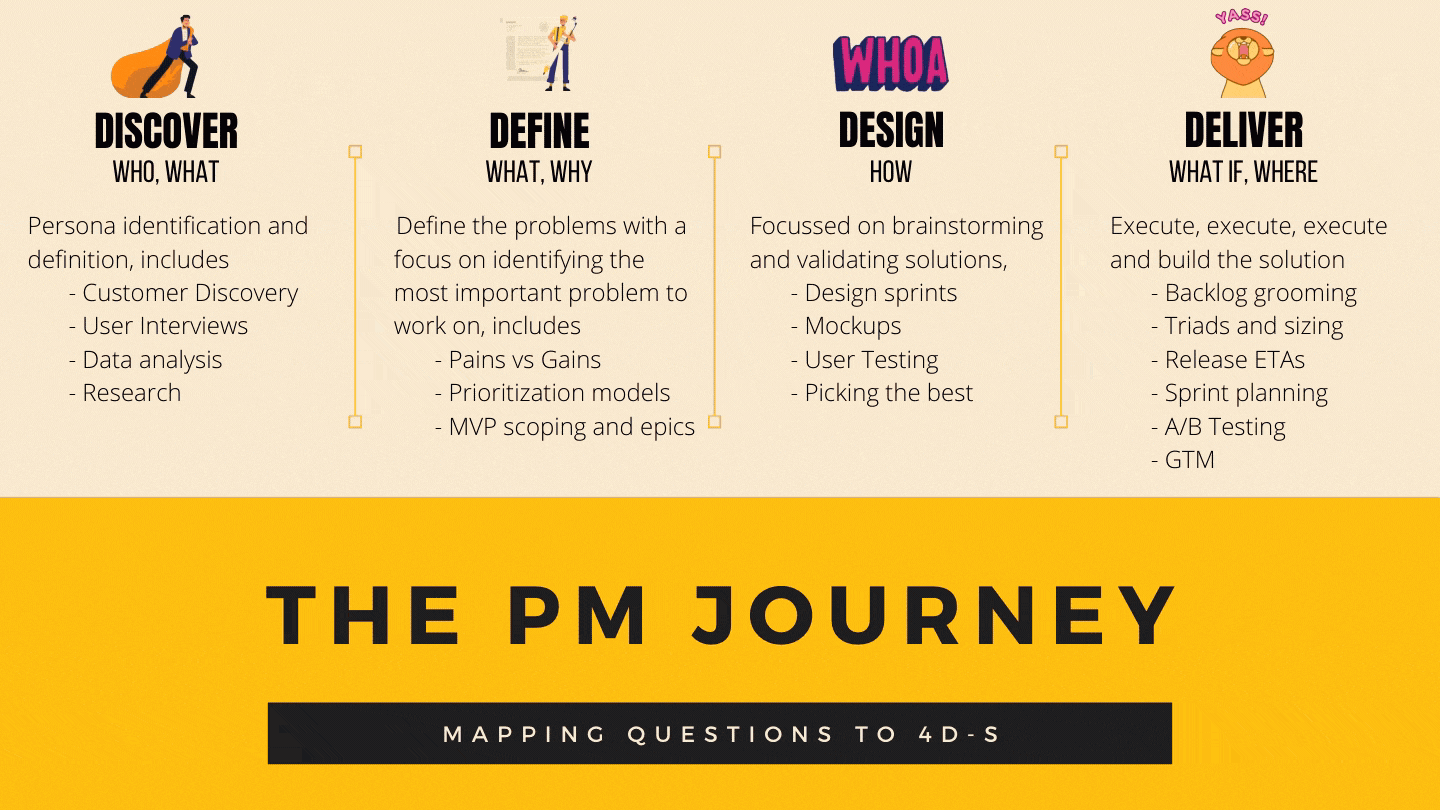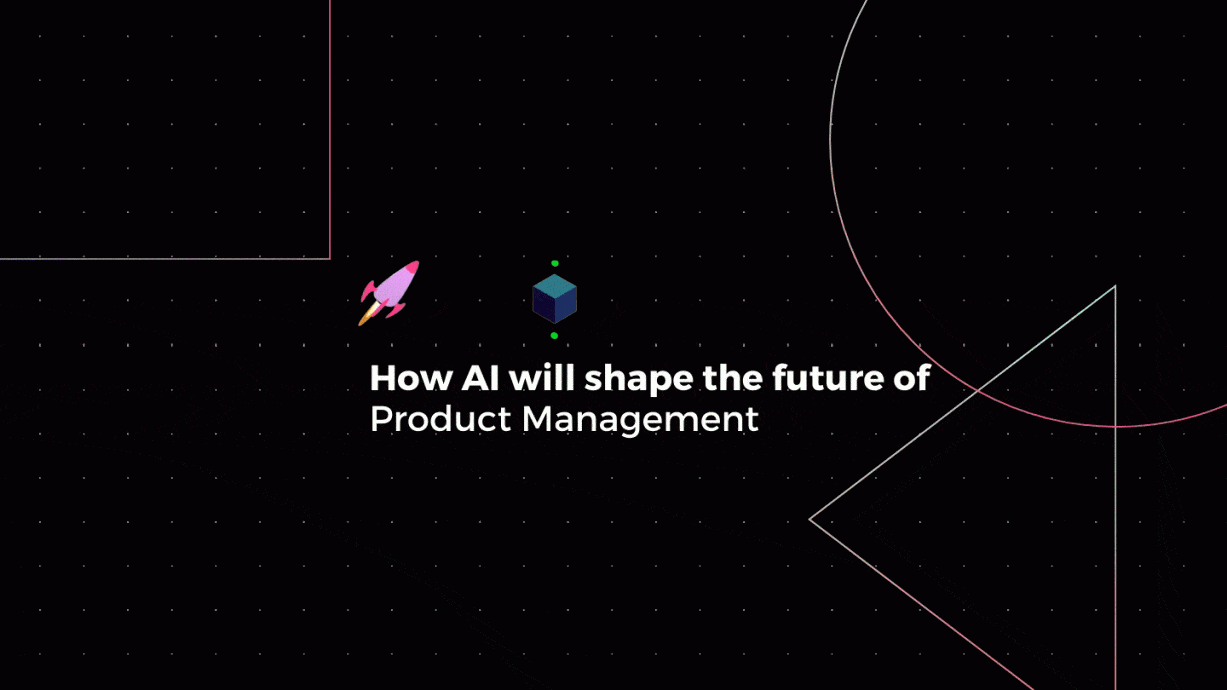Expectation
NOTE: Before we start, let’s first get a level set as to what to expect (and what not to expect) from this article.
- It’s a well known fact now, that the success of any AI initiative is heavily dependent on the data to learn and train the models, so this article although focuses on the nuances of where AI can be plugged to enable better Product Management, this article does not delve into the nitty gritty details of how and where to get the data from
- This article does not get into explaining what AI is and what are its subsets, etc. you will find plenty of that information on the internet ?
Table of contents
Introduction
Let’s start with the ever confusing and probably the most googled phrase about a Product Manager’s role first,
So what does a Product Manager do?
Well, in reality, if I were to put a one phrase answer, it would read something like
Solve for unmet needs in the market
And if I were to expand this further, one would probably break it down into
- Find unmet needs
- Solve for them
And if one were to go deep and understand in reality how does a Product Manager manage to do the above, the answers to the following questions will help you get a better understanding:
- Who are you solving for? — Persona in question
- What problems do they have? — Pains vs. Gains of the persona
- Why is this the most important problem to solve? — Prioritization based on how will it help you achieve your organizations and product goals
- How will you solve it? — Listing down all possible solutions, picking the one with maximum value based on user testing, validations etc.
- What if we choose something wrong? — Identifying and listing risks upfront and pivoting as needed based on data
- Where did you end up? — Measure success connecting back to the goal
If one were to superimpose what a PM is doing in each of the phases, it could be classified into the following:
Discover > Define > Design > Deliver

And in each of the phases/ questions above, a Product Manager goes through this journey traversing heap loads of data, deriving insights, some based on tribal knowledge and some on gut by interacting with multitude of stakeholders. Sounds like a typical problem AI could solve? Well glad that you thought that way, so let’s continue!
Now that we have a level set and a common understanding of what a Product Manager does (or should be doing), let us see how AI can enable and help a PM be better in each of these phases, off-course again tied to problems that exist in each of these phases today.
How AI can help PMs in the “Discover” phase?
With the primary questions in this phase focussed around who are we solving for and what are we solving, some of the use cases that AI can help and enable product management are:
- knowledge mining based on interview and video transcripts of user interviews
- suggestive questions to ask based on how an interview is progressing, based on past historical questionnaires (bubbling up the next most relevant question to be asked on a user interview)
- auto correlation and mapping user interviews output to the customer journey phases
- auto creation of concise list of asks from various sources that PMs rely on like support tickets, customer ideation portals, interview transcripts, etc.
How AI can help PMs in the “Define” phase?
With this phase a PM is primarily focussed on the why’s of the importance of a problem to focus on based on multiple problems identified. Some of the use cases that AI (predominantly Machine Learning) can enable in this phase are:
- auto prioritization models to learn and suggest prioritized list of features/ capabilities to focus on based on what matters like impact, urgency, cost, least complex
- learn with each user input to be better the next time while recommending
- auto suggestions for right sized MVPs
- auto updation of roadmaps rather than manually managing them on powerpoint decks (also provides single pane of glass view for all stakeholders in the organization rather than having multiple variants of a roadmap deck)
How AI can help PMs in the “Design” phase?
The design phase is all about focussing on one part of the how, i.e. picking up the best possible solution among the multiple possibilities that are identified as probable solutions. When choosing the best solution, the primary focus is on the output of user testing (via prototypes/ low fidelity mock ups) ensuring that the users gets optimal value and are able to solve the stated problem we started off with. User testing in this stage not only provides insights into what might be better as a solution but also helps in reducing waste during the development cycle.
Some of the use cases that AI can enable in this phase are:
- auto correlation between various user testing methodologies across user segments applied to provide a recommended best solution based on user testing, A/B tests to create a scored model for data driven decision making
How AI can help PMs in the “Deliver” phase?
Well one can’t pin point and say any of these phases are more important than the other, but the deliver phase that focuses on execution is crucial as, if this is not done right, all the good work done in the above 3 phases falls flat. The way AI can enable better product management in this phase could be in the following areas:
- Predictive analytics to suggest likelihood of failure/ success at the time of planning based on team working on (past working history, points burned, slippages, quality churned), risks identified
- % completeness towards goal, predictive recommendations to avoid pitfalls and failures proactively based on goal(s) defined
Conclusion
Special thanks to Dheeraj Muraharisetty and Ankur Vashishtha for their valuable inputs and Sanksshep Mahendra for his nudge to make this happen.
